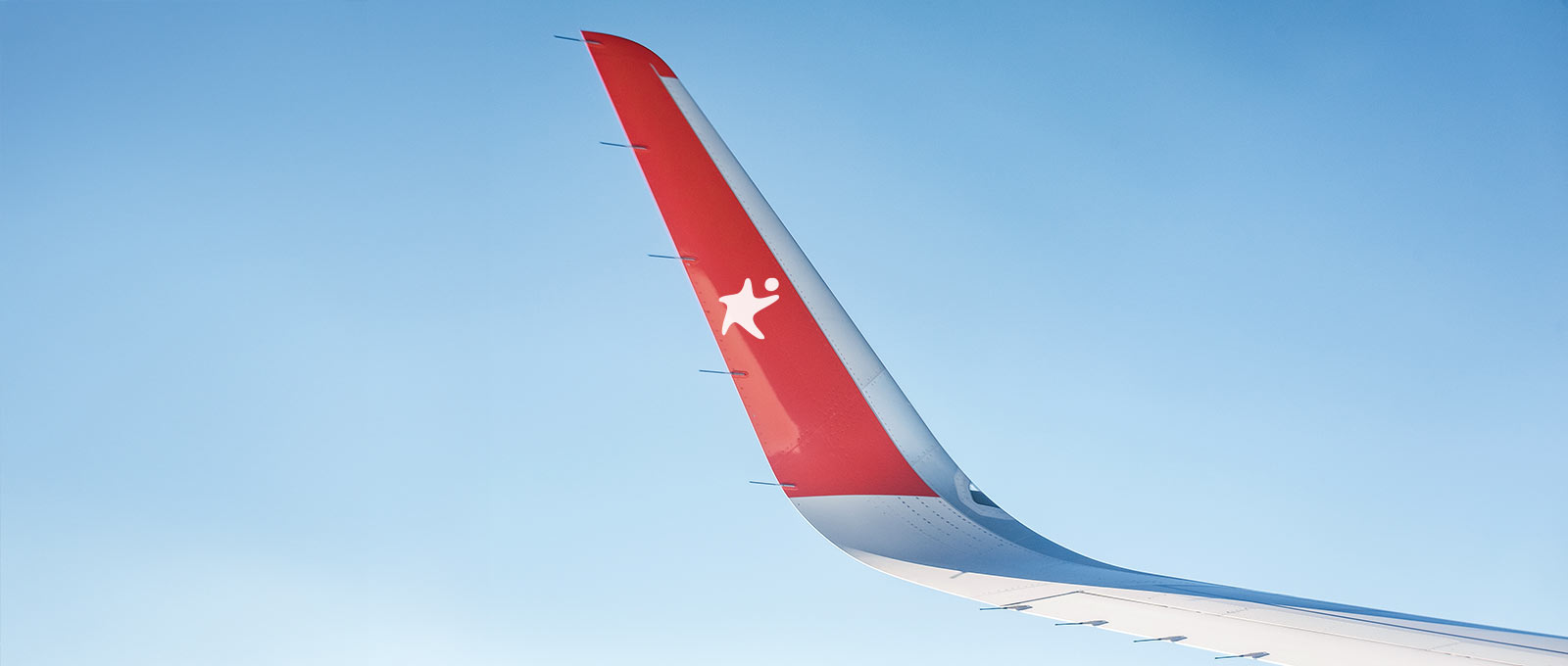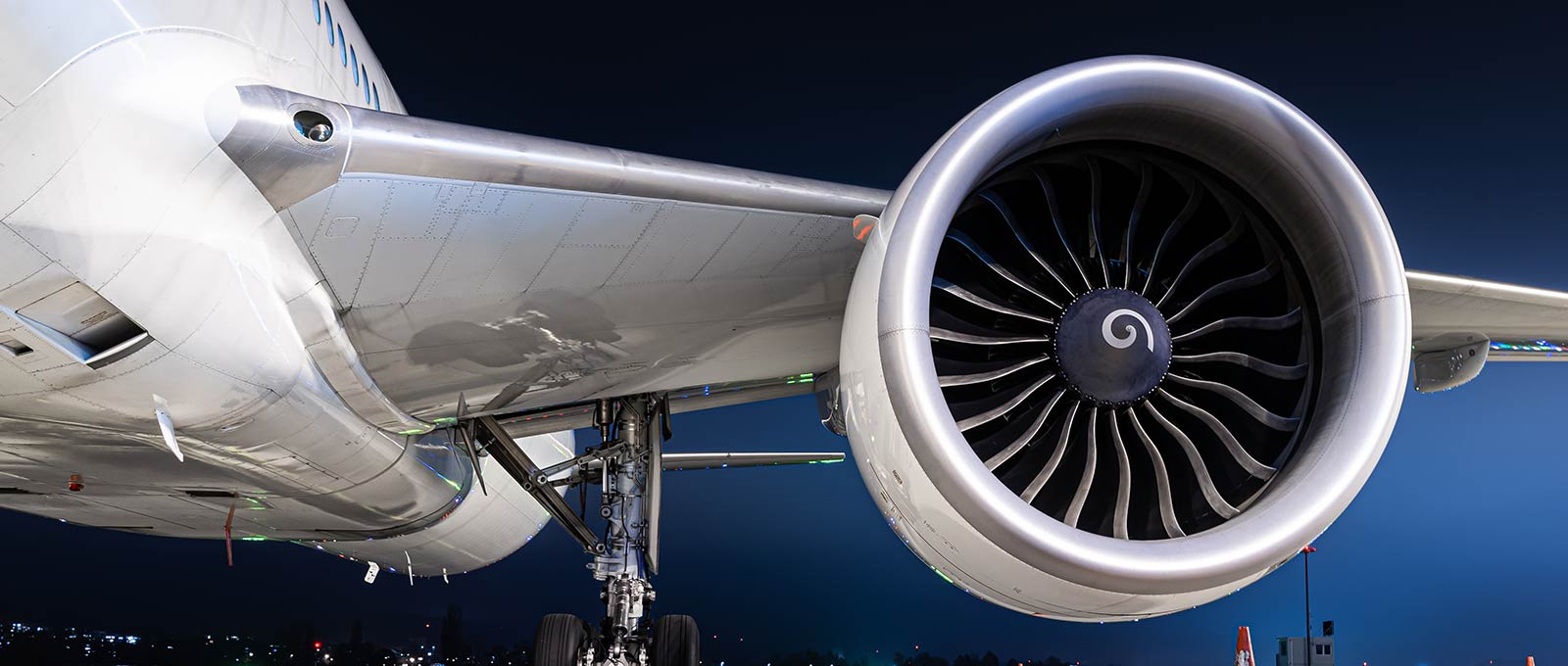Plane travels are equally fun and frightening for many people. Flying among the clouds and the butterflies in your stomach are the fun parts of flying on a plane, while hanging at such heights can be a bit scary. In this blog post, you will know more about the plane landing steps, systems, and secrets in detail. Corendon Airlines Blog invites you to a flying journey with your feet on the ground.
Fundamentals of Flight Mechanics
To have a better understanding of flight mechanics, we need to digest the four elements of flight: lift, thrust, drag, and weight. You may see all four flight mechanics widely explained in the list below.
- Lift: Lift is the upward force that makes an airplane rise into the sky. It is created when air flows faster over the top of the wings than under them. This difference in pressure pushes the plane upward and keeps it flying.
- Thrust: Thrust is the forward force that pushes the plane ahead. It comes from the engines or propellers. Without thrust, the airplane cannot move forward, and without moving forward, it cannot stay in the air.
- Drag: Drag is the opposite of thrust. It is the air resistance that tries to slow the airplane down. Pilots and engineers design airplanes in a smooth shape to reduce drag and make flying more efficient.
- Weight: Weight is the downward force caused by gravity pulling the airplane toward the Earth. To fly, lift must be stronger than weight. During landing, pilots actually use weight to bring the plane safely back down.
Here is a table that summarizes the main forces and vectors in flight mechanics.
| Flight Mechanic | Vector Act | Vector Position | Opposing Force |
|---|---|---|---|
| Lift | Upward vector | Perpendicular to the wings | Weight |
| Thrust | Forward vector | In the direction of aircraft movement | Drag |
| Drag | Backward vector | Opposite to thrust | Thrust |
| Weight | Downward vector | Toward the center of the Earth | Lift |

Steps of Plane Landing
Think of a metal box weighing hundreds of tons trying to touch the ground. The process of landing a plane involves several distinct steps, each with its own unique features. First, the plane gets into position during the approach. Then, the wheels finally meet the runway in the touchdown phase. Finally, the aircraft slows down safely in the deceleration step.
Approach
The approach is the stage where the plane lines up with the runway and begins to descend at a certain angle. Pilots reduce speed, adjust the flaps, and carefully follow the signals from air traffic control. This step is crucial because a stable approach ensures a smooth and safe touchdown.
Touchdown
Touchdown happens when the airplane’s wheels actually touch the runway. At this moment, pilots show their expertise by making small adjustments with the controls to keep the plane steady. Additionally, the landing gear absorbs much of the impact, ensuring the passengers feel only a gentle bump as the aircraft touches down.
Deceleration
After the wheels are firmly on the runway, the deceleration stage begins. Pilots use brakes, reverse thrust from the engines, and sometimes spoilers on the wings to slow the plane down. This step ensures that the aircraft reaches a safe speed before it leaves the runway and heads toward the terminal.
The following table summarizes the technical details of each landing step, including speed, systems, and critical factors that ensure a safe touchdown.
| Landing Step | Key Angle / Speed | Main Systems Used | Critical Factors |
|---|---|---|---|
| Approach | Glide slope: ~3° / Speed: 140–160 knots | Flaps, slats, autopilot, ATC guidance | Stable descent, correct alignment, crosswind control |
| Touchdown | Speed: ~120–140 knots | Landing gear, control surfaces, spoilers | Minimize vertical speed, maintain runway centerline |
| Deceleration | Speed reduced to taxiing: ~20–30 knots | Wheel brakes, thrust reversers, spoilers | Runway length, weather conditions, smooth braking |
What Affects Landing?
There are some key factors affecting a plane’s landing. Weather, the plane’s weight, the length of the runway, and the pilot’s expertise are among these key elements. For example, when it is rainy or snowy, passengers are more likely to feel stronger bumps while landing. Additionally, the landing process may not be as smooth if a pilot is in their first year of the profession. Runway’s length is another important factor that has a big impact on planes’ landing. The longer the runway is, the easier the landing process will be. The list below provides a detailed description of each factor.
- Weather: Bad weather, like rain, snow, or strong winds, can make landing harder and bumpier. Pilots need to adjust the plane’s speed and angle carefully.
- Plane’s Weight: Heavier planes need more distance to land safely. Weight affects how fast the plane slows down and how much the landing gear absorbs impact.
- Runway’s Length: Longer runways give pilots more space to slow down the plane safely, making landing smoother and reducing risk.
- Pilot’s Expertise: Experienced pilots can handle unexpected situations better, adjust controls accurately, and make landings smoother and safer.
What Can Be Done to Improve Plane Landing Safety?
Landing a plane is one of the most critical phases of flight, and several measures can help improve safety. Pilots, air traffic control, airport infrastructure, and the aircraft itself all play a role in this phase. By combining proper training, advanced technology, and careful planning, the landing process can become smoother, safer, and more predictable even in challenging conditions.
- Pilot Training: Regular simulation and real-life training improve reaction time and decision-making during tricky landings.
- Advanced Navigation Systems: Using instruments like ILS (Instrument Landing System) and GPS helps pilots maintain precise approach angles and altitude.
- Runway Maintenance: Well-maintained and clearly marked runways reduce the risk of accidents and allow smoother landings.
- Weather Monitoring: Continuous updates on wind, rain, or snow conditions help pilots adjust approach speed and angle safely.
- Aircraft Maintenance: Properly functioning brakes, landing gear, and spoilers ensure that deceleration and touchdown are handled effectively.
- Communication: Clear instructions from air traffic control prevent confusion and help coordinate safe landings.
FAQ About Plane’s Landing
Can a plane land without landing gear?
Yes, it is possible, but it is called a belly landing and is done very carefully by pilots.
How fast does a plane go when landing?
Planes usually land at 120–160 km/h, depending on the aircraft type and weight.
What is the belly landing of a plane?
Belly landing happens when a plane lands without its landing gear down, so the body touches the runway.
Why do plane windows need to be open when landing?
Open windows let pilots and passengers see outside in case of an emergency during landing.
Why do my ears hurt when the plane is landing?
Ear pain happens because of pressure changes inside the cabin as the plane descends.
Where is the landing gear compartment on a plane?
The landing gear is stored inside the plane’s body or wings, depending on the aircraft model.
Do pilots land planes manually?
Sometimes yes, but many planes use autopilot systems for a controlled and safe landing.
What is it called when a plane circles before landing?
This is called a holding pattern, used to wait for permission or adjust timing before landing.
Also, don’t forget to read our article “How Do Planes Fly?” to dive deeper into the world of aviation.
















